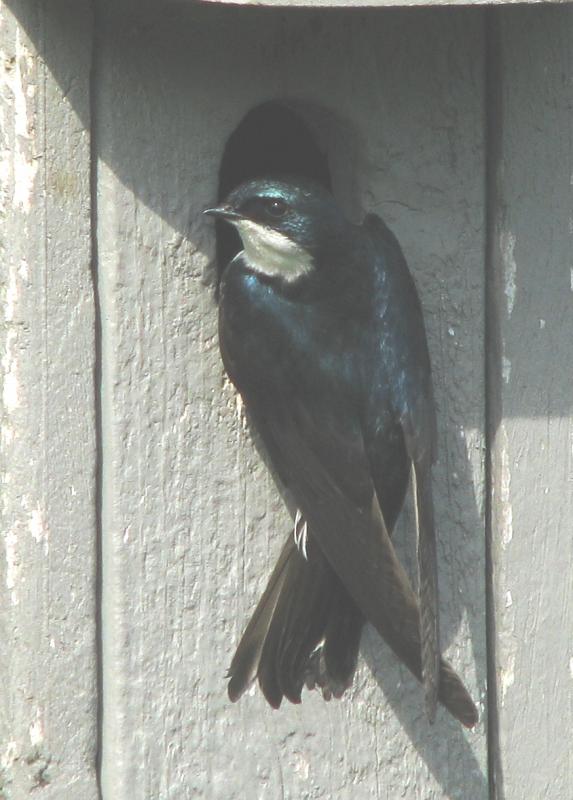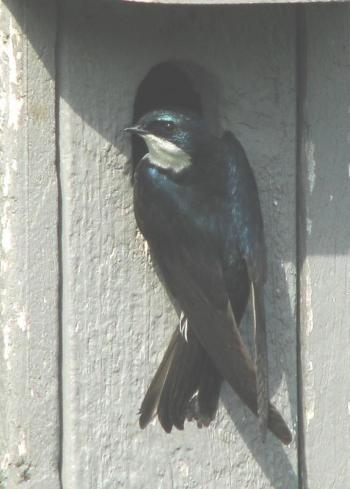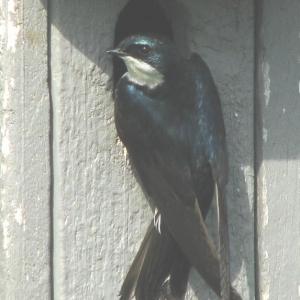Cherish the Swallows While You Still Can
As we have watched the tree swallows swooping over Cobbosseecontee Stream in Gardiner searching for insect prey on these cold early April days, we have pondered the fate of swallow populations, especially in the face of changes happening to our climate. And then just a few days ago a new scientific paper was published that delved into exactly that question. The paper used data from the Maritime Provinces of Canada, some of it collected by citizen scientists over many decades. One of the authors included Maine’s own Nat Wheelwright, a Bowdoin College professor.
Swallows, as we all know, feed almost exclusively on insects (tree swallows will eat bayberries and other berries in the winter, if necessary to survive). They capture these insects in the air. Because of this foraging habit they are considered “aerial insectivores,” meaning just that: they capture insects while flying around. Other aerial insectivores include chimney swifts, nightjars like common nighthawks and whip-poor-wills, and flycatchers like the eastern phoebe and the eastern kingbird.
Few people are aware that there has been a major decline in many species of aerial insectivores in North America, with especially steep losses in New England and eastern Canada. Here in Maine, our swallow populations have been hard hit. We well remember our delight in watching the comings and goings of colonies of cliff swallows that were common under the eaves of old barns and other structures across much of coastal Maine as late as the 1980s. Today, cliff swallow breeding sites in the state are hard to find. The same goes for bank swallows, those diminutive brown-backed swallows—their distinctive single brown chest band helps make them distinctive (that, and they nest in holes in earthen banks.) Even the familiar tree swallow that today mostly nest in nest boxes that we humans put up for them (rather than old woodpecker holes in trees near water) have experienced a severe population decline in Maine. And barn swallows, while still probably one of the most commonly known swallows because of their habit of nesting in and under barns, garages, sheds, bridges, porches, and other human-made structures, have also shown a major decrease in numbers.
Knowing this fact, researchers of the recently published study tried to see if they could understand more about the reasons behind the declines in swallows. They found that most swallows, the exception being bank swallows, are now arriving and laying eggs about 10-14 days earlier than they were three or four decades ago. Bank swallows are among the species that spend the winter in the more southerly regions of South America, so the lack of change in arrival and egg-laying dates may be because they have no weather clues that far south to tell them to start back earlier. The researchers also found that bank swallows showed poorer breeding success now than they did decades ago. This could be because the birds are arriving too late to take advantage of peak of insect hatches. The reasons for declines in other swallow species were not immediately evident from the study. But the researchers conjectured that overall insect abundance and diversity may be declining as a result of climate change impacts to wetlands and waterways. Obviously, pollution, pesticides, and habitat loss and fragmentation all contribute negatively as well.
Hopefully more research will continue to try to clarify what is happening to our swallows and other aerial insectivores. If you still have some swallows nesting nearby, cherish them and do what you can to make sure that they are undisturbed and have healthy habitats in your area.
Jeffrey V. Wells, Ph.D., is a Fellow of the Cornell Lab of Ornithology. Dr. Wells is one of the nation's leading bird experts and conservation biologists and author of “Birder’s Conservation Handbook”. His grandfather, the late John Chase, was a columnist for the Boothbay Register for many years. Allison Childs Wells, formerly of the Cornell Lab of Ornithology, is a senior director at the Natural Resources Council of Maine, a nonprofit membership organization working statewide to protect the nature of Maine. Both are widely published natural history writers and are the authors of the book, “Maine’s Favorite Birds” and the newly published “Birds of Aruba, Bonaire, and Curaçao” from Cornell Press.
Event Date
Address
United States





























